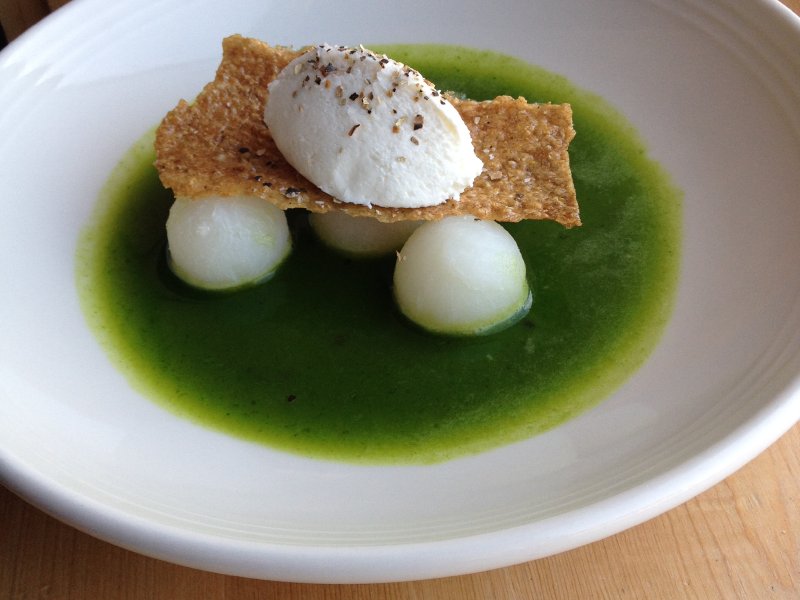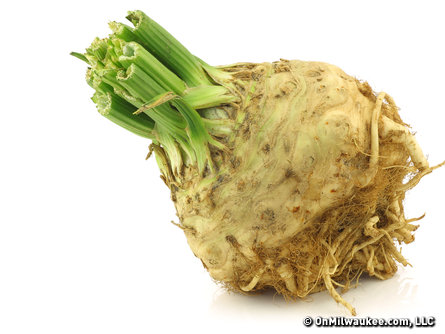When you order a pizza or grab a burger for dinner, that's sustenance, pure and simple. But, when you want something more from your meal, it pays to look to the experts. There's a reason we pay top notch chefs a premium to prepare dishes for our enjoyment. But, what goes into an expertly prepared restaurant meal? This series focuses on the techniques that elevate cuisine from humble to haute at restaurants across the city.
"If it tastes acidic, it’s not right… if it tastes salty, you’ve failed," Chef Thomas Hauck tells me as we chat in the dining room at c.1880 in Walker’s Point.
The fact is, when you dine out, you may think you’re paying the chef to cook you scallops, lamb or cauliflower. But, what you’re really paying for is balance – a critical element that often means the difference between good and truly great food.
"A dish without balance is one dimensional," says Hauck. "It’s not very good. It’s flat. And there’s nothing worse than a flat dish."
It takes a seasoned palate to recognize when a dish is missing a component – whether it be salt, sweetness, sourness or bitterness – and make adjustments to create a dish where all the ingredients contribute to the greatness of the whole.
But where does a great palate come from?
"It develops over time," Hauck says. "My son is only 2, and he’s a great example. If I give him a pea puree seasoned as I would season it for my wife and I, he won’t like it. But, if I give him plain peas, he’s more receptive. Then, moving forward, I can add a little bit of salt and he’ll eat it. It’s about tasting food in steps and developing a sensitivity to the flavors."
Hauck says he really learned to exercise his palate while working with Chef Michel Richard of Citronelle in Washington, D.C. – and it was there that he learned that a balanced dish
"He stressed balance more than anything," Hauck explains. "He believed in both the balance of flavors and textures. For him, it was about balance and crunch."
He offers up the example of fried chicken – which is delicious, hot, salty and juicy. And yet it’s the skin and the crunch that keeps people coming back for more. The crunch balances the dish in a textural way.
And thinking about the way the components come together in a dish is a learned skill that can only become finely tuned with years of experience.
"It’s not the first thing that you learn. But, as you cook, it develops. And as you make the progression between sous chef and chef, it’s something you really have to begin to master."
Hauck says that the biggest mistake both chefs and home cooks make is not considering the addition of an acidic component when creating a dish.
"A splash of vinegar or citrus, a bitter green," he explains, "You need something of that nature to balance things out."
That’s why, he says, you’ll almost always find something pickled in every dish.
"Just as you look at salt to pull flavors out, you also have to look to acid for that pop," he says.
He points to a simple vinaigrette as an example.
"Greens are delicious on their own with olive oil, but you take it to a whole ‘nother level when you add the vinegar to the mix."
Barbeque sauce and ketchup are other great examples.
"In both cases, if you get rid of the acid component, there’s not much left," he says. "It’s why ketchup has ruled the roost in America for all these years. It’s America’s demiglace – and the perfect example of how sweet, salty and acidic come together to create a great unified product."
The same is true for more advanced dishes – like c.1880’s monkfish dish, which contains endive, blood oranges, scallions, black olives and caramelized fennel.
Hauck starts with the endive – which is a bitter component by nature. To tame its flavor, he combines it with a sauce made from orange juice, butter, red wine vinegar, sugar and salt and then subjects it to the long, slow process of sous vide.
"It’s sealed at the highest setting, so there’s no air in the bag," he explains. "And it cooks at 85 degrees for about three hours."
He chose sous vide to preserve the flavors inherent to the endive.
"If I were to do this in a pot, it would turn out completely different," he notes. "The endive would oxidize, and steam and vapor would escape from the pot. That’s flavor leaving the dish. Sous vide keeps everything intact."
The four hour process results in endive that is tender, and colored delicately with a hint of orange. It’s also has a more pleasant flavor profile.
"It balances out," Hauck says. "It has sweetness, tang. The bitterness of the endive is matched by the vinegar but then balanced with sugar and fat."
Next, Hauck takes fresh fennel, cleans and quarters it, and then halves each quarter. The fennel pieces are then cooked in butter in the same pan the monkfish will be prepared.
"When you sear fennel and caramelize it," Hauck explains, "It brings out the natural sugars."
As the fennel is basted with butter, the sugars caramelize. Meanwhile, that sweet anise flavor is infused into the butter, which is used to glaze the sweet, delicate flesh of the monkfish.
When the dish is plated, the fish is placed atop a savory sauce made from black olives, fennel and onions and accompanied by the braised endive, caramelized fennel, tender scallions and a garnish of chopped olives.
And, if one component is missing, Hauck says you’ll notice.
"If you do it without the olives, it’s missing something," he says. "There’s an earthy, salty flavor that really adds depth. You’d have an overriding sweetness from the blood orange and the tamed endive. Likewise, if you remove the citrus, you’re missing the acid."
Hauck notes that this is one of the few dishes at the restaurant that doesn’t need to be finished with a splash of acid – and it’s because the flavors all come together so well on their own.
"Each part is good on its own, but the sum is greater than its parts," he adds.
Lori is an avid cook whose accrual of condiments and spices is rivaled only by her cookbook collection. Her passion for the culinary industry was birthed while balancing A&W root beer mugs as a teenage carhop, fed by insatiable curiosity and fueled by the people whose stories entwine with each and every dish. She’s had the privilege of chronicling these tales via numerous media, including OnMilwaukee and in her book “Milwaukee Food.” Her work has garnered journalism awards from entities including the Milwaukee Press Club.
When she’s not eating, photographing food, writing or recording the FoodCrush podcast, you’ll find Lori seeking out adventures with her husband Paul, traveling, cooking, reading, learning, snuggling with her cats and looking for ways to make a difference.





